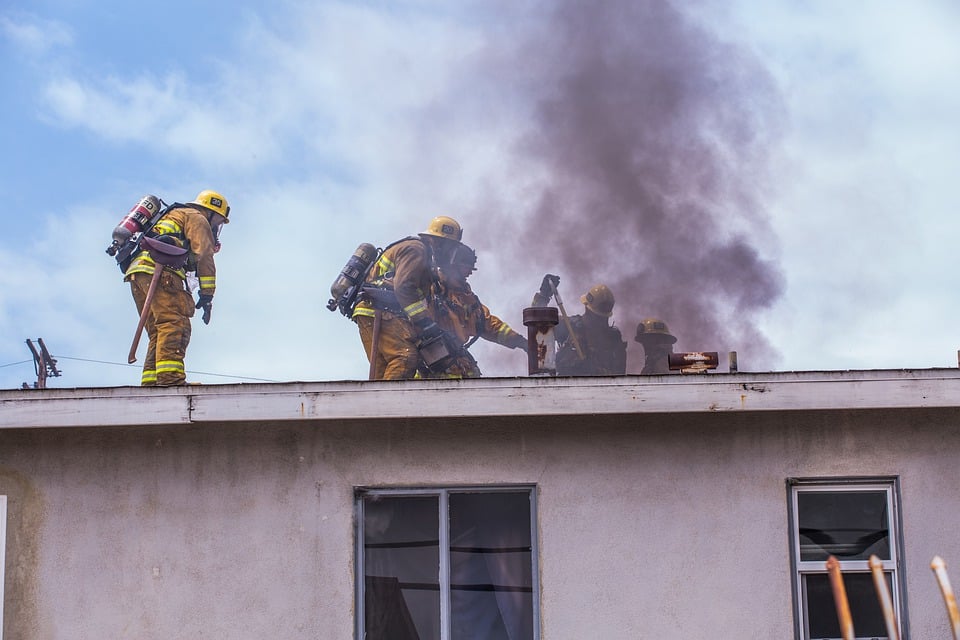If a fire occurs in your home or workplace, the aftermath can be devastating. Even a small fire can cause significant damage to your essentials like furniture, appliances, etc.
Are you an unfortunate owner of a fire-ravaged home? If so, you are likely wondering if you will have to gut the property and replace all the items.
The short answer is no. With proper fire damage restoration, you can save a lot of things inside your home. Securing your home to prevent further deterioration should be your main objective. Below are some measures you can take.
Note: Before we get to the measures, remember that fire restoration requires skill, effort, and time. So it pays to evaluate whether you want to take these measures on your own, or if you’d be better off tapping into the services of Utah fire cleanup specialists who have expertise in managing the process.
1. Ensure safety
Before anything else, you should confirm that the home is safe to enter. This requires checking for signs of foundation damage and inspecting the external appearance of the property. If anything looks off, it’s best to wait for an inspector to deem whether or not it’s okay to step into your home.
Once you enter the house, make sure to open up all the doors and windows to increase ventilation (this is really important). If there isn’t enough air, you can use a fan to let some air pass through. Ventilation helps to remove residual smoke as well as the odor caused by burnt materials.
2. Clean up soot
Soot is that flaky or black powdery substance generated by incompletely burned materials. You are likely to find it on surfaces exposed to fire, like draperies, carpet, furniture, clothing, etc. The substance can pose a great risk to your health if not cleaned up. Soot is the most dangerous in powder form as it can fly through the air and enter our bodies through the respiratory system, causing breathing issues.
Different materials produce different forms of soot, which can negatively affect your health if they’re not cleaned. Firstly, you will want to wear a mask to stay safe from the substance. Second, you can clean the soot depending on what type of materials were burned.
- Use high alkali detergents to clean oily soot, and then do a thorough rinse.
- Get a low alkali detergent and a dry sponge to remove dry soot.
Regardless of the type, make sure to start from top to bottom to prevent the soot from falling off the objects as you clean. It’s also a good idea to secure surfaces like carpet as oily soot can easily stain their fabrics. Vacuuming might help in speeding up the process.
3. Eliminate smoke damage
After a fire, you’ll have a degree of smoke damage to your wallpaper, paint, and walls. You can try scrubbing it clean with bleach and detergents. If the damage is serious, you will need to call in a professional to perform the fire restoration for you.
Professional companies use advanced techniques to remove the smoke odor and break down molecules. The methods also help remove smoke that seeped into crevices, pores, and cracks (standard cleaning techniques are ineffective against invisible evidence of smoke).
If you’re thinking of repainting, make sure all the surfaces are dry and clean before performing the job.
Pro tip: Take extra caution when cleaning smoke damage from clothing. Dry cleaning is your best bet, and you might be able to find a local dry cleaner who specializes in doing post-fire laundry. If you prefer to wash clothing at home, be aware that it may require a few passes through the laundry. If the smell persists, you can try soaking bleach-safe clothing in a mixture of 1 cup bleach, ¼ cup trisodium phosphate and 1 gallon water, followed by a thorough rinse.
4. Remove damaged possessions
The fourth step in fire damage restoration requires the removal of any items that are damaged beyond repair. Exercise extra caution in touching electrical machines or appliances as they can store electricity even if they’re unplugged.
Additionally, you can temporarily remove the items that haven’t been damaged by the fire, clean them, and spruce them up for re-entry once the fire cleanup is complete.
5. Address standing water
Another critical step in the fire damage restoration process is the removal of standing water that may have been used to douse the fire. As water can soak into your flooring, subflooring, and even walls, you will need a dehumidifier and air movers to properly dry wet surfaces.
And in cases where the water has come in contact with exposed wires or other sources of electricity, make sure to cut off the connections before attempting to dry off the wet areas.
6. Deal with mold and mildew
If firefighters put out the fire in your home, you may be left with wet surfaces that could breed mold and mildew. Mold and mildew can grow on your clothing, furniture, carpets, mattresses, air ducts, and walls. As you wait for mold cleanup professionals to visit, air out all the rooms and see if you can clean the filters and vents.
7. Deodorize the space
The last step requires that you deodorize your home to clear the smoky smell. You can start by washing the towels, beddings, curtains and clothes that have a stubborn smoky odor. Add a cup of baking soda to the drum plus some vinegar (or bleach for bleach-safe fabrics) for the best results.
Apply baking soda to the rugs and carpets before vacuuming them. You may need to shampoo them as well.
For more information, contact The Disaster Company. Our staff specializes in all aspects of fire restoration in Bountiful, Kaysville, Layton, Ogden and surrounding areas.

